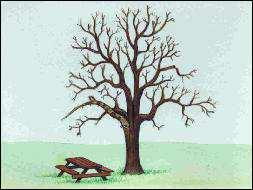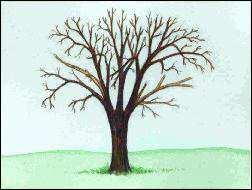Written by Jasper Boekelman and published on https://www.doityourself.com/
Pruning is probably one of the least understood and most daunting landscape maintenance practices for most homeowners. Many people aren’t sure what to do or when to do it. However, proper pruning is essential for maintaining attractive and healthy trees and shrubs. The practice of pruning can be simplified through an understanding of the basic principles and techniques. Although this general discussion focuses on pruning of ornamental trees and shrubs, many of the same principles will be applicable for more specialized procedures such as those used for tree fruit, small fruit, and roses.
Table of Contents
Pruning Trees – Introduction

The objective of pruning is to produce strong, healthy, attractive plants. By understanding how, when and why to prune, and by following a few simple principles, this objective can be achieved.
TIP: Our expert gardening advisor, Susan Patterson reminds you, “Use caution when working with pruning tools and on a ladder.”Continue reading below.
All woody plants shed branches in response to shading and competition. Branches that do not produce enough carbohydrates from photosynthesis to sustain themselves die and are eventually shed; the resulting wounds are sealed by woundwood (callus). Branches that are poorly attached may be broken off by wind or accumulation of snow and ice. Branches removed by such natural forces often result in large, ragged wounds that rarely seal. Pruning as a cultural practice can be used to supplement or replace these natural processes and increase the strength and longevity of plants.
Tree Forms
Trees have many forms, but the most common types are pyramidal (excurrent) and spherical (decurrent). Trees with pyramidal crowns, e.g., most conifers, have a strong central stem and lateral branches. The branches are more or less horizontal and do not compete with the central stem for dominance. Trees with spherical crowns, e.g., most hardwoods, have many lateral branches that may compete for dominance.
To reduce the need for pruning it is best to consider a tree’s natural form. It is very difficult to impose an unnatural form on a tree without a commitment to constant maintenance.
TIP: Susan advises, “Understand the pruning needs of a particular tree before planting.”
The main reasons for pruning ornamental and shade trees include safety, health, and aesthetics. In addition, pruning can be used to stimulate fruit production and increase the value of timber.
Safety

Pruning for safety involves removing branches that could fall and cause injury or property damage, trimming branches that interfere with lines of sight on streets or driveways, and removing branches that grow into utility lines. Safety pruning can be largely avoided by carefully choosing species that will not grow beyond the space available to them, and have strength and form characteristics that are suited to the site.
TIP: Susan suggests, “Step back from your pruning job frequently to be sure that you are on task.”
Sign up to get the latest DIY Projects and Advice!
SignupI agree to receive emails from the site. I can withdraw my consent at anytime by unsubscribing. Check our Privacy Policy.
Health

Pruning for health involves removing diseased or insect-infested wood, thinning the crown to increase airflow and reduce pest problems, and removing crossing and rubbing branches. Pruning can best be used to encourage trees to develop a strong structure and reduce the likelihood of damage during severe weather. Removing broken or damaged limbs encourages wound closure.
Aesthetics

Pruning for aesthetics involves enhancing the natural form and character of trees, or stimulating flower production. Pruning for form can be especially important on open-grown trees that do very little self-pruning.
Topiary
Pollarding and topiary are extreme examples of pruning to create a desired, unnatural effect. Pollarding is the practice of pruning trees annually to remove all new growth. The following year, a profusion of new branches is produced at the ends of the branches. Topiary involves pruning trees and shrubs into geometric or animal shapes. Both pollarding and topiary are specialized applications that involve pruning to change the natural form of trees. As topiary demonstrates, given enough care and attention, plants can be pruned into nearly any form. Yet just as proper pruning can enhance the form or character of plants, improper pruning can destroy it.
Original post here https://www.doityourself.com/stry/prunetreeintro/.
